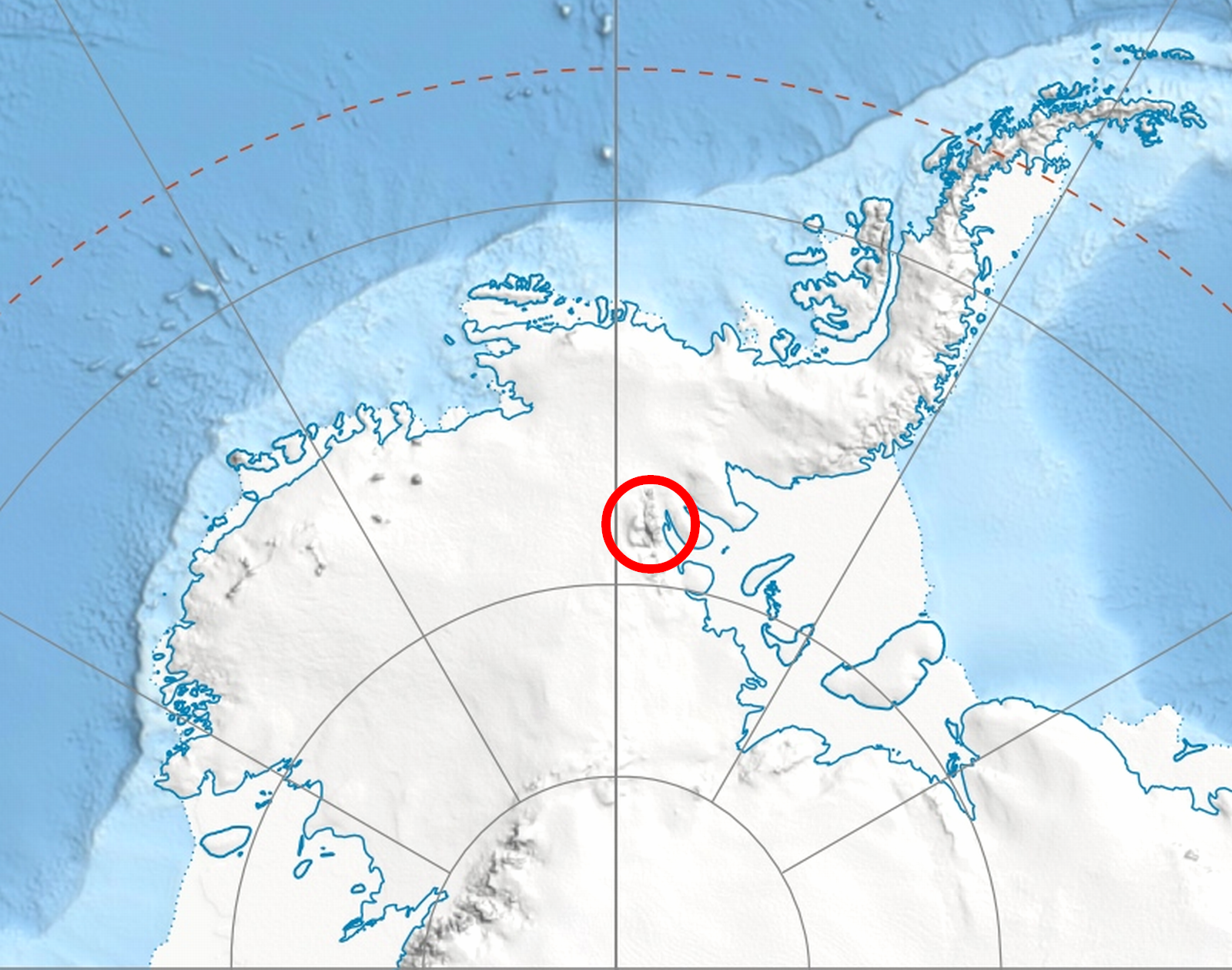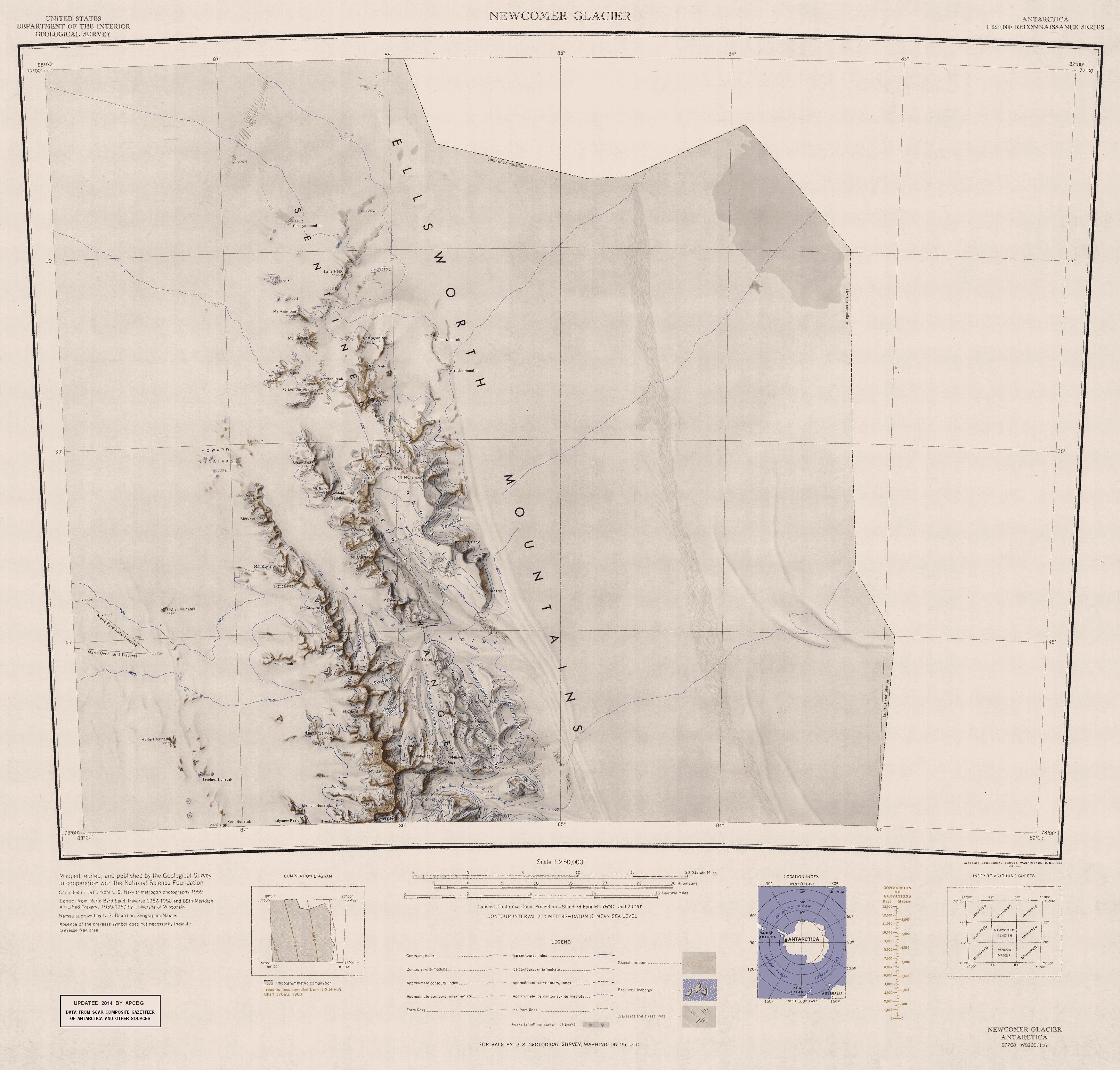|
Mount Dalrymple
Mount Dalrymple () is a mountain (3,600 m) between Mount Alf and Mount Goldthwait in the northern part of the Sentinel Range, Antarctica. It surmounts Sabazios Glacier to the north-northeast and Embree Glacier to the southeast. The mountain was mapped by the Marie Byrd Land Traverse party of 1957–58, under Charles R. Bentley, and named by the Advisory Committee on Antarctic Names for Paul C. Dalrymple, meteorologist, member of the wintering party at Little America V in 1957 and the South Pole Station in 1958. See also * Mountains in Antarctica This is a list of all the Ultra prominent peaks (with topographic prominence greater than 1,500 metres) in Antarctica. Some islands in the South Atlantic have also been included and can be found at the end of the list. Antarctica South Atl ... References Ellsworth Mountains Mountains of Ellsworth Land {{EllsworthLand-geo-stub ... [...More Info...] [...Related Items...] OR: [Wikipedia] [Google] [Baidu] |
Mount Alf
Mount Alf () is a mountain rising over 3,200 m between Mount Sharp and Mount Dalrymple in the north part of the Sentinel Range, Antarctica. It surmounts Sabazios Glacier to the northeast. It was named after Edward A. Alf, the nephew of Raymond M. Alf Museum of Paleontology. He worked at the U.S. Weather Bureau Airport Station, in Great Falls, Montana in 1961. Joseph Kaplan, chairman of the National Academy of sciences—National Research Council of the United States of America sent a letter confirming this honor. The Antarctic feature, a mountain peak in West Antarctica, has been named in recognition of his contributions while a participant in the United States scientific program in Antarctica during the International Geophysical Year. The proposal to name this feature in his behalf was made by Mr. George R. Toney and Dr. Charles Bentley who mapped this area in January 1958, and was approved by the National Academy of Sciences' Special Committee on IGY Geographic Names in the A ... [...More Info...] [...Related Items...] OR: [Wikipedia] [Google] [Baidu] |
Mount Goldthwait
Mount Goldthwait () is a prominent mountain (3,815 m) located 2.5 nautical miles (4.6 km) south of Mount Dalrymple in the north part of the Sentinel Range, Antarctica. Discovered by the Marie Byrd Land Traverse Party of 1957–58, under Charles R. Bentley, and named for Richard P. Goldthwait, consultant, Technical Panel on Glaciology, U.S. National Committee for the IGY, and later Director, Institute of Polar Studies, Ohio State University. See also * Mountains in Antarctica This is a list of all the Ultra prominent peaks (with topographic prominence greater than 1,500 metres) in Antarctica. Some islands in the South Atlantic have also been included and can be found at the end of the list. Antarctica South Atl ... References Ellsworth Mountains Mountains of Ellsworth Land {{EllsworthLand-geo-stub ... [...More Info...] [...Related Items...] OR: [Wikipedia] [Google] [Baidu] |
Sentinel Range
The Sentinel Range is a major mountain range situated northward of Minnesota Glacier and forming the northern half of the Ellsworth Mountains in Antarctica. The range trends NNW-SSE for about and is 24 to 48 km (15 to 30 mi) wide. Many peaks rise over and Vinson Massif (4892 m) in the southern part of the range is the highest elevation on the continent.Sentinel Range. SCAR Composite Antarctic Gazetteer. Sentinel Range comprises a main ridge (featuring Vinson Massif in its southern portion) and a number of distinct heights, ridges and mountains on its east side, including (south to north) Owen Ridge, |
Antarctica
Antarctica () is Earth's southernmost and least-populated continent. Situated almost entirely south of the Antarctic Circle and surrounded by the Southern Ocean, it contains the geographic South Pole. Antarctica is the fifth-largest continent, being about 40% larger than Europe, and has an area of . Most of Antarctica is covered by the Antarctic ice sheet, with an average thickness of . Antarctica is, on average, the coldest, driest, and windiest of the continents, and it has the highest average elevation. It is mainly a polar desert, with annual precipitation of over along the coast and far less inland. About 70% of the world's freshwater reserves are frozen in Antarctica, which, if melted, would raise global sea levels by almost . Antarctica holds the record for the lowest measured temperature on Earth, . The coastal regions can reach temperatures over in summer. Native species of animals include mites, nematodes, penguins, seals and tardigrades. Where ve ... [...More Info...] [...Related Items...] OR: [Wikipedia] [Google] [Baidu] |
Sabazios Glacier
Sabazios Glacier ( bg, ледник Сабазий, lednik Sabaziy, ) is the long and wide glacier on the east side of northern Sentinel Range in Ellsworth Mountains, Antarctica. It is situated south of Newcomer Glacier, west of Anchialus Glacier, north of Embree Glacier, and east of Zhenda Glacier and Skaklya Glacier. The glacier drains the east slopes of Mount Alf and Mount Sharp, and the north slopes of the side ridge that trends 9.15 km from Mount Dalrymple on the main crest of Sentinel Range east-northeast to Robinson Pass, flows northwards and joins Newcomer Glacier northwest of Mount Lanning in Sostra Heights. The glacier is named after the Thracian god Sabazios. Location Sabazios Glacier is centred at . US mapping in 1961. Tributary Glaciers * Zhenda Glacier * Skaklya Glacier See also * List of glaciers in the Antarctic * Glaciology Maps Newcomer Glacier. Scale 1:250 000 topographic map. Reston, Virginia: US Geological Survey, 1961. Antarctic Digita ... [...More Info...] [...Related Items...] OR: [Wikipedia] [Google] [Baidu] |
Embree Glacier
Embree Glacier is a long glacier in the north-central part of Sentinel Range, Ellsworth Mountains, draining the eastern slopes of Mount Hale, Mount Davis and Mount Bentley, the northeast slopes of Mount Anderson, and the northwestern slopes of Probuda Ridge, flowing north-northeastwards and north of Mount Schmid turning east to join Rutford Ice Stream east of Mount Tegge. Named by the US-ACAN for Maj. Henry Embree, USAF, who participated in the establishment of the South Pole Station in 1956. Embree Glacier is in Antarctica. Location Embree Glacier is centred at . US mapping in 1961, updated in 1988. Tributary glaciers * Kopsis Glacier * Padala Glacier * Marsa Glacier * Patleyna Glacier See also * List of glaciers in the Antarctic * Glaciology Glaciology (; ) is the scientific study of glaciers, or more generally ice and natural phenomena that involve ice. Glaciology is an interdisciplinary Earth science that integrates geophysics, geology, physical geog ... [...More Info...] [...Related Items...] OR: [Wikipedia] [Google] [Baidu] |
Charles R
Charles is a masculine given name predominantly found in English and French speaking countries. It is from the French form ''Charles'' of the Proto-Germanic name (in runic alphabet) or ''*karilaz'' (in Latin alphabet), whose meaning was "free man". The Old English descendant of this word was '' Ċearl'' or ''Ċeorl'', as the name of King Cearl of Mercia, that disappeared after the Norman conquest of England. The name was notably borne by Charlemagne (Charles the Great), and was at the time Latinized as ''Karolus'' (as in ''Vita Karoli Magni''), later also as '' Carolus''. Some Germanic languages, for example Dutch and German, have retained the word in two separate senses. In the particular case of Dutch, ''Karel'' refers to the given name, whereas the noun ''kerel'' means "a bloke, fellow, man". Etymology The name's etymology is a Common Germanic noun ''*karilaz'' meaning "free man", which survives in English as churl (< Old English ''ċeorl''), which developed i ... [...More Info...] [...Related Items...] OR: [Wikipedia] [Google] [Baidu] |
Advisory Committee On Antarctic Names
The Advisory Committee on Antarctic Names (ACAN or US-ACAN) is an advisory committee of the United States Board on Geographic Names responsible for recommending commemorative names for features in Antarctica. History The committee was established in 1943 as the Special Committee on Antarctic Names (SCAN). It became the Advisory Committee on Antarctic Names in 1947. Fred G. Alberts was Secretary of the Committee from 1949 to 1980. By 1959, a structured nomenclature was reached, allowing for further exploration, structured mapping of the region and a unique naming system. A 1990 ACAN gazeeter of Antarctica listed 16,000 names. Description The United States does not recognise territorial boundaries within Antarctica, so ACAN assigns names to features anywhere within the continent, in consultation with other national nomenclature bodies where appropriate, as defined by the Antarctic Treaty System. The research and staff support for the ACAN is provided by the United States Geolog ... [...More Info...] [...Related Items...] OR: [Wikipedia] [Google] [Baidu] |
Little America V
Little America was a series of Antarctic exploration bases from 1929 to 1958, located on the Ross Ice Shelf, south of the Bay of Whales. The coordinates are approximate. Little America I The first base in the series was established in January 1929 by Richard Byrd, and was abandoned in 1930. This was where the film '' With Byrd at the South Pole'' (1930), about Byrd's trip to the South Pole, was filmed. Little America II Little America II was established in 1934, some above the site of the original base, with some of the original base accessed via tunnel. This base was briefly set adrift in 1934, but the iceberg fused to the main glacier. During the 1934–1935 expedition, many souvenir letters were sent from Little America, using a commemorative postage stamp issued by the U.S. government. The souvenir cancellation operations were conducted under extremely difficult conditions. Little America established the first successful radio broadcasting from Antarctica, making ... [...More Info...] [...Related Items...] OR: [Wikipedia] [Google] [Baidu] |
South Pole Station
South is one of the cardinal directions or compass points. The direction is the opposite of north and is perpendicular to both east and west. Etymology The word ''south'' comes from Old English ''sūþ'', from earlier Proto-Germanic ''*sunþaz'' ("south"), possibly related to the same Proto-Indo-European root that the word ''sun'' derived from. Some languages describe south in the same way, from the fact that it is the direction of the sun at noon (in the Northern Hemisphere), like Latin meridies 'noon, south' (from medius 'middle' + dies 'day', cf English meridional), while others describe south as the right-hand side of the rising sun, like Biblical Hebrew תֵּימָן teiman 'south' from יָמִין yamin 'right', Aramaic תַּימנַא taymna from יָמִין yamin 'right' and Syriac ܬܰܝܡܢܳܐ taymna from ܝܰܡܝܺܢܳܐ yamina (hence the name of Yemen, the land to the south/right of the Levant). Navigation By convention, the ''bottom or down-facing side'' o ... [...More Info...] [...Related Items...] OR: [Wikipedia] [Google] [Baidu] |



